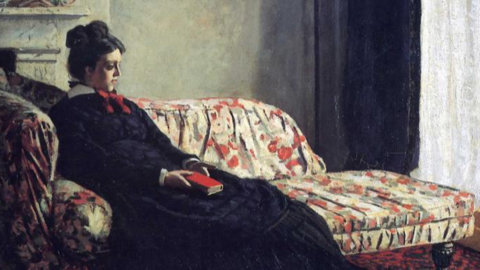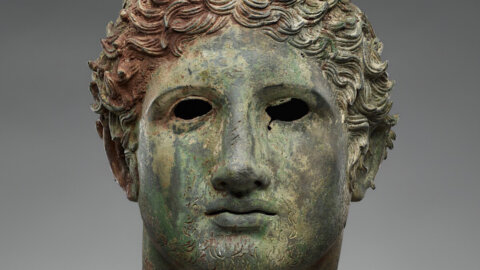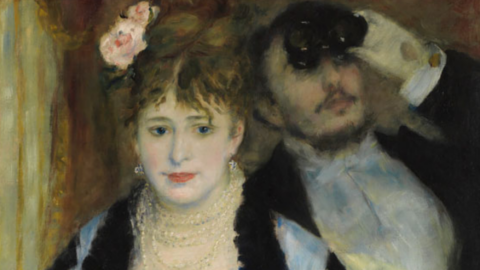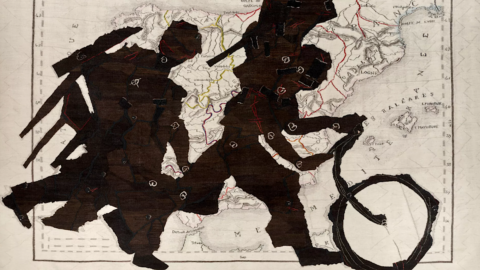La collection of Léon Monet frère de l'artiste and collectionneur arrives at the Musée du Luxembourg in Paris. Brother of Claude Monet and his interest in the Impressionists and in the Rouen School led him to become a supporter and collector of Renoir, Pissarro and many other artists.
The fame of Claude Monet and his role as leader of Impressionism are now fully established, but the personality of his brother Léon, color chemist, Rouen industrialist and collector, is still to be discovered. In 1872 Claude Monet, back in Le Havre, painted Impression, rising sun (Musée Marmottan Monet), while Léon founds the Industrial Society of Rouen and decides to give active support to his brother and his impressionist friends. These are the first in the establishment of a substantial collection of Impressionist paintings.
Leon Monet in Rouen
Recognized for his "lively and quick intelligence" and for his "cordial and outspoken" character, Léon Monet became a respected person, very involved in the many cultural associations that make up the city of Rouen. He encouraged Monet and his Impressionist friends to participate in the 23rd municipal exhibition, where he himself exhibited four works from his collection. Thanks to his constant interest in the artists of his generation, the Impressionists and painters of the Rouen school, he brought together – with the collection of his friend François Depeaux – one of the most remarkable collections of modern art in the Rouen region.
The exhibition brings together a number of important works, around a journey highlighted by Léon Monet for works that evoke the landscapes of his childhood spent in Le Havre and also his professional and family development between Rouen and the Petites-Dalles on the Normandy coast. It highlights the personality of this collector, his privileged privileges with his brother Claude and with some artists of his generation such as Alfred Sisley, Camille Pissarro and Auguste Renoir.
The exhibition also features color recipes, fabric samples and account books, evoking the industrial Rouen in which Léon Monet evolved. By creating a dialogue between paintings, drawings, photographs and albums in colour, the exhibition sheds new light on the intimacy of the Monet family and on the brothers' shared taste for colour. While the chemistry of synthetic dyes is revolutionizing textile printing, the exhibition largely evokes the professional world in which Léon Monet evolved and highlights the industrial city of Rouen and its "Indian" factories. Claude Monet's first sketchbook, dated 1856, and the portrait of his brother Léon, executed by the artist in 1874, the year of the first Impressionist exhibition in Paris, are presented here for the first time.
The exhibition sees the exceptional support of the Musée d'Orsay, the Musée Marmottan Monet and the Académie des beaux-arts, Paris.
Among the exhibited works, Renoir's Paris
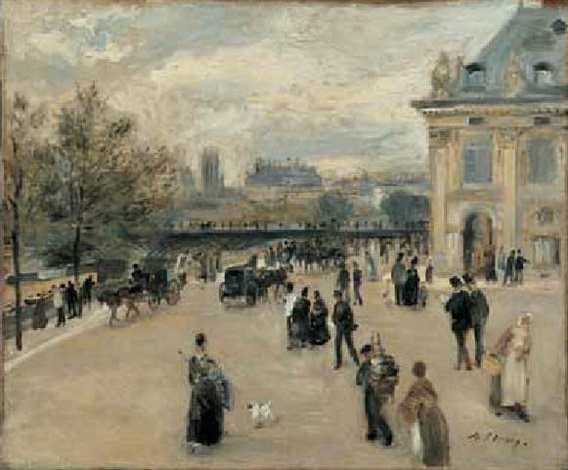
Pierre-Auguste Renoir "Paris, l'Institut au Quai Malaquais” 1872 © Courtesy of the painting owner
On March 24, 1875, on the initiative of Auguste Renoir, a sale of “Paintings and watercolors by Claude Monet, Berthe Morisot, A. Renoir and A. Sisley” was held at the Hôtel Drouot. As the first exhibition of the group of "intransigent", soon called "impressionists” from the pen of the critic Louis Leroy in Le Charivari, this sale also aroused the harshest criticism in the press of the time. During this session, Léon Monet acquired two paintings by Renoir, including Paris, the Institute of Quai Malaquais. Only the dimensions (38 x 46 cm) are wrong, as often happens in the catalogs of the first auctions. Despite the title shown in the catalog – View of Paris (Institut), also shown on the back of the canvas – Léon Monet, faithful to his habits as a collector, affixed a label to the stretcher that read: “Renoir – Le Pont des SS Fathers. The Institute. Leon Monet Collection”.
Obviously, Renoir had in mind the views of Paris produced by his elders, the painters Camille Corot or Johan Barthold Jongkind. With Paris, the Institute at the Quai Malaquais therefore fits into the tradition, maintaining still soft tones but choosing a painting with a powerful light and a free touch that reveals itself as decidedly modern. Renoir organizes the space into different planes and the depth is given by the subtle staggering of the figures which, from imposing in the foreground, become tiny silhouettes on the Pont des Saints-Pères. The Institute on the right divides the space into two zones, in the foreground the Quai Malaquais, then the Quai de Conti in its extension, hidden by the Institute. On the other bank, the bell tower of Saint-Germain-l'Auxerrois, recently built (1861), stands out against the dazzling whiteness of the clouds. Renoir perfectly translates the teeming activity of Paris: there an elegant woman with a small dog, here a stair-holder, a glazier or a chimney sweep, servants, two friends walking and conversing side by side, or even these walkers in front of the booksellers. This light and this little sketchy touch can be found in a similar view, Le Quai Malaquais (1872), acquired by the collector François Depeaux, no doubt after discovering this canvas from Léon Monet.
Cover work
Claude Monet
Intérieur or Meditation or Meditation. Mme Monet au canapé 1871
Paris, musée d'Orsay, legs of Monsieur and Madame Raymond Koechlin, 1931
© Rmn – Grand Palais / Gérard Blo
At the 23rd Municipal Exhibition of Fine Arts in Rouen, Léon Monet provided several paintings from his collection, including two paintings by his brother, A Canal in Holland and Interior or Meditation, which represent a “corner of […] sofa, [. ..] on which the light filtered through a muslin curtain falls”, according to the critic Georges Dubosc of the Journal de Rouen. After the Spring Flowers exhibition in 1864, another strategy took shape: choosing to present two consensual subjects, a landscape and a figure. Under this title hides a portrait of Camille Doncieux, the artist's favorite model since 1865 and his wife since 1870. The painting was created in the London flat where the young couple took refuge from the Franco-Prussian war. This portrait has had various titles. In May 1871 it appeared in the French section of the South Kensington International Exhibition under the titles Repose, in English, and Méditation, in French. During its exhibition in Rouen in March 1872, the painting was renamed Interior, perhaps by Léon Monet who took care of all the formalities for his brother. A year later, the painting was sold to Paul Durand-Ruel for the benefit of Claude Monet, under the title La Lecture. We find it again ten years later in the Chocquet sale catalogue, again with the title Meditation.
Beyond the portrait of his sister-in-law, what certainly touched Léon Monet is the work on the fabric of the sundial. The red flowers of the fabric match the bow that the young woman wears around her neck and the binding of her book. The brightly colored Japanese fan, placed on the fireplace, is reminiscent of Léon Monet's collection, including not only crepe paper prints but also fans.

